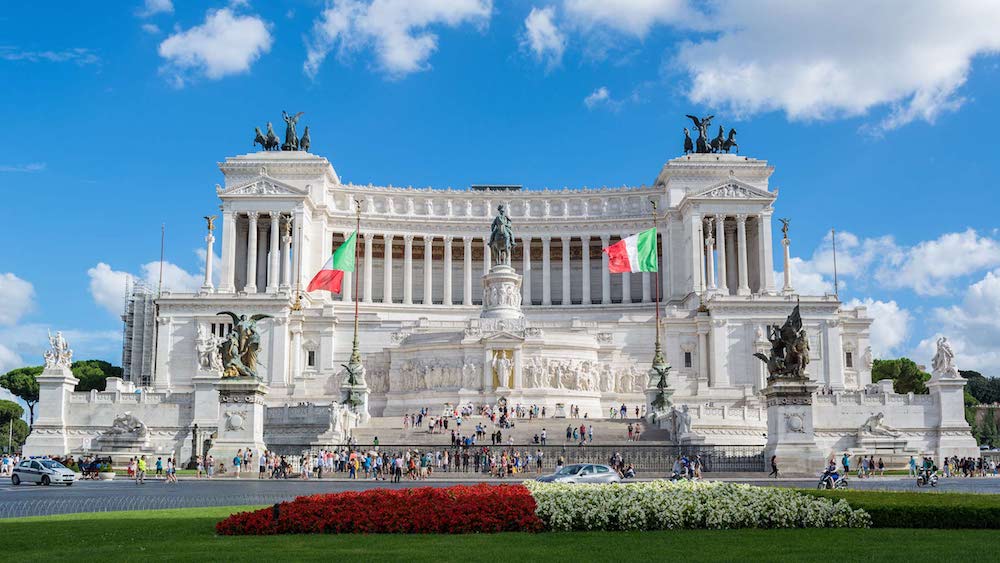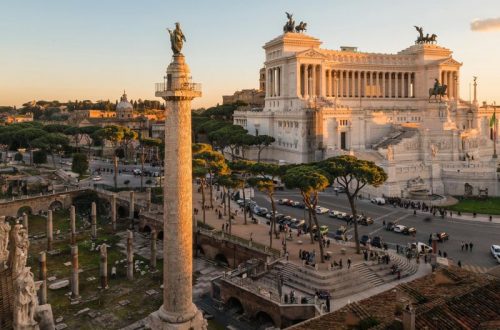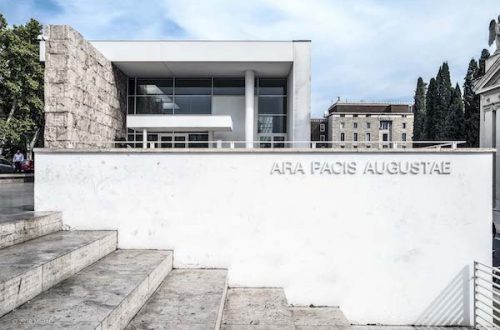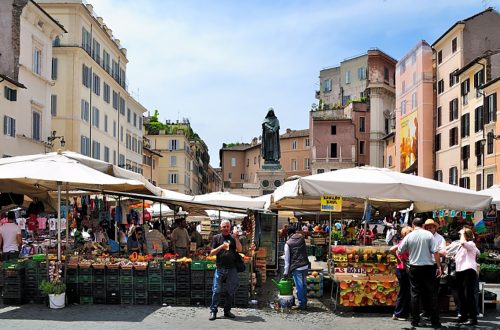
Vittoriano – Altare della Patria
The name Vittoriano derives from Vittorio Emanuele II, the first king of Italy.
Today also known as Altare della Patria or for some Wedding Cake or Typewriter
On the death of Vittorio Emanuele II, the first king of Italy, in 1878, it was decided to erect a monument to celebrate the Father of the Fatherland and with him the entire Risorgimento season.
The Vittoriano was to be a space open to citizens. The monumental complex was inaugurated by Vittorio Emanuele III on June 4, 1911. After 33 years of work.
It was the culminating moment of the International Exposition which celebrated the fifty years of united Italy.
In the monumental complex, under the statue of the Goddess Roma, the body of the Unknown Soldier was buried on 4 November 1921 in memory of the many soldiers who died in the war and whose name or place of burial is unknown.
The Altar of the Fatherland
The Altar of the Fatherland is only a portion of the complex, born from an idea of 1906. The competition was won by the Brescia sculptor Angelo Zanelli. The shrine in the center of the Altar of the Fatherland with the statue of the goddess Rome and the Tomb of the Unknown Soldier.
Left bas-relief:
Industry: the heavy anvil hangs from the long beam, supported by the homo faber. A female hand rests an oak crown on the anvil, a symbol of strength. The winged genius of Work, relying on human fatigue, is about to climb victoriously on the great triumphal plow. Agriculture: farming, harvesting, harvesting and irrigation.
Right bas-relief:
Three female figures offer honorary crowns to Rome, followed by the banners, the insignia of the legions. On the triumphal chariot are the victorious genius of the Love of Homeland and the Hero, leaning on the great sword of the Titans. Two women hold his cloak in their hands. Also in this cycle we find the motif of the long beam, from which the brazier of the sacred fire hangs.
The values of the Italians
Six groups represent allegories of the civil values of the Italian people.
Two are in gilded bronze and four in Botticino, the Brescia marble that covers the monument.
Strength, Law, Concord, Action, Thought and Sacrifice.
The cities and regions of Italy
Regions and cities are central elements of the complex.
Each of the statues of the sixteen Italian regions of the late nineteenth century was entrusted to a sculptor from that same region.
The statues of the fourteen cities that were capitals or maritime republics are by Eugenio Maccagnani.
Ferrara, Turin, Urbino, Amalfi, Naples, Bologna, Florence, Venice, Genoa, Palermo, Pisa, Ravenna, Mantua, Milan
“UNITY OF THE COUNTRY”, “FREEDOM OF CITIZENS”
The central theme of the whole monument is represented by the two inscriptions on the propylaea:
“PATRIAE UNITATI” “CIVIUM LIBERTATI”, “To the unity of the fatherland” “To the freedom of citizens”, each post almost as a comment on the two quadrigas of Carlo Fontana and Paolo Bartolini.
The fountains of the two seas represent the sea that surrounds Italy.
The fountain on the left, by Emilio Quadrelli, represents the Adriatic Sea, facing East, with the Lion of San Marco.
On the right the Tyrrhenian Sea, by Pietro Canonica, with the she-wolf of Rome and the mermaid Partenope.
The four Winged Victories
The four winged victories, like the two complexes of Thought and Action, were gilded.
They were sculpted by: Nicola Cantalamessa, Adolfo Apolloni, Mario Rutelli and Arnaldo Zocchi.
The QuadrigheThe Quadrighe
They symbolize Unity and Freedom.
Placed in 1927, they bring the monument to a height of 81 meters from the height of Piazza Venezia.
The language of plants
The Vittoriano is rich in plant symbols.
Here are the most common:
palm (victory); oak (strength); laurel (valor, victorious peace); myrtle (sacrifice); olive tree (peace, concord).
To find more info please visit the official website
![]()




